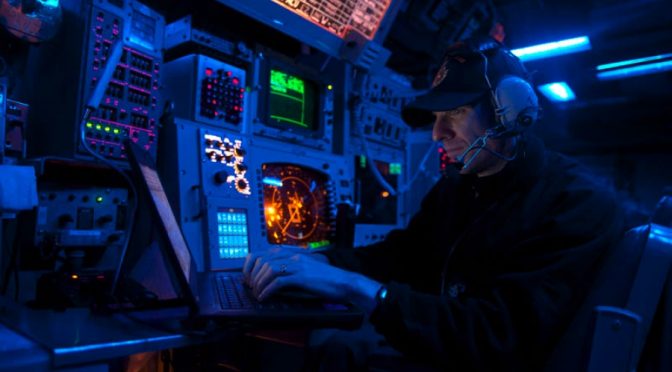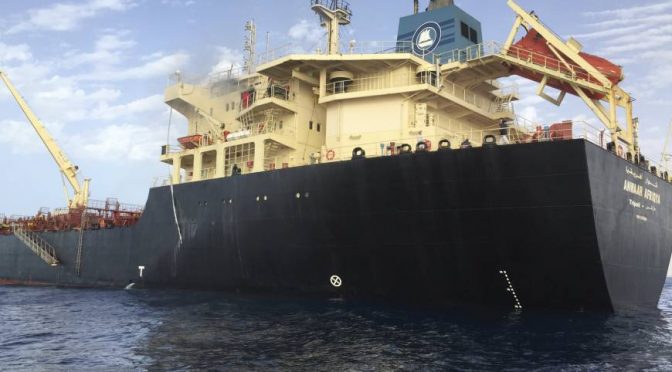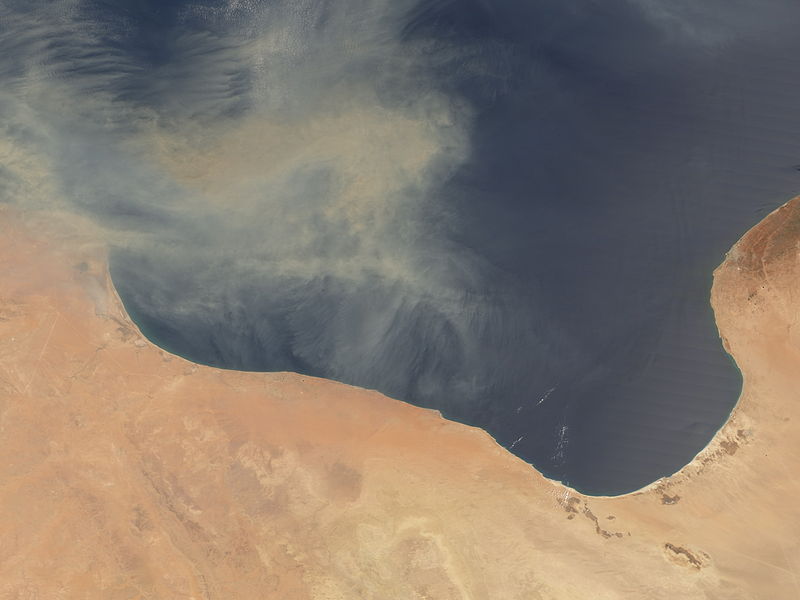By Sally Deboer
CIMSEC was recently joined by Captain John Watkins, the first commanding officer of the Naval Information Warfighting Development Center (NIWDC). Read on to learn about this new command’s role in shaping the U.S. Navy’s information warfighting skills and capabilities.
SD: We are joined by CAPT John Watkins, the first commanding officer of the newly opened Naval Information Warfighting Development Center. It is truly an honor to have you here. Before we begin, can you share a bit about yourself and your background?
JW: Thanks first and foremost for having me, it’s an honor for me as well. I came into the Navy in 1992 as a Surface Warfare Officer and completed various tours in engineering. I did that for roughly five years and really enjoyed it, but subsequent to those tours I attended the Naval Postgraduate School in Monterey, California where I achieved a Master’s degree in IT Management during which time I laterally transferred into the space and electronic warfare community. A few years transpired and that community was subsumed into the information professional community that we know of today, which comes with the 1820 designator.
Since being an IP, I’ve had multiple operational and staff tours, to include XO of USS Coronado, serving as N6 and Information Warfare Command on Expeditionary and Carrier Strike Group Staffs, and as the N6 on a Numbered Fleet staff. Staff tours have included time on the OPNAV and SURFACE FORCES staffs. I’ve been very fortunate and blessed to have had multiple command tours including NAVCOMTELSTA San Diego, Navy Information Operations Command Texas, and now just recently, my assignment here at the Naval Information Warfighting Development Center.
SD: Let’s kick off by introducing our readers to your new command. Initial operating capability for the NIWDC was declared on 27 March 2017. Could you please explain the role of this warfighting development center, and specifically the mission of the NIWDC within the information domain?
JW: Like the other warfighting development centers (WDC), we are all focused on four primary lines of operation. First, we’re concerned with enhancing advanced level training. As you can imagine, in terms of NIWDC, that entails all of our information-related capabilities. The advanced level training for our units and forces in the fleet occurs at the latter stages of the optimized fleet response plan (OFRP). We’re heavily invested in that along with our fellow WDCs.
The second line of operation is the development of doctrine that allows us to achieve that advanced level of proficiency – doctrine including tactics, techniques, and procedures (TTPs), standard operating procedures (SOPs), higher level Concepts of Operation (CONOPS), or as necessary, revisions to Naval Warfare publications.
The third line of operation is to cultivate and develop a subject matter expertise known throughout all the WDCs as a ‘warfare tactics instructor’ or WTIs. Other WDCs have WTIs in place today, for example, the model that has been around longest is the Naval Aviation WDC, “Top Gun,” associated with advanced tactics for jet fighting, air-to-air combat, etc. What we want to do here at NIWDC is to build out our own WTI pipeline, which I think of as the “Information Warfare Jedi Knights” of the future; we’ll have quite a few WTI pipelines, as we have a broad spectrum of capabilities.
Last but not least, we’ll have an organic assessments capability built into the command which allows us to, in an OODA loop fashion, assess our advanced level training capabilities, our TTPs and SSPs, and our doctrine as we bake it into our training pipeline and processes, ensuring it is delivering optimal IW warfighting effects. Those are the four lines of operation that were promulgated to the WDCs, directed by the Chief of Naval Operations, in 2014.
SD: The traditional warfare Type Commanders (Air, Surface, Undersea) have established their own warfare development centers, as you mentioned. Given that IW is a critical enabler of other warfare areas, how do you envision the NIWDC interacting with the other warfare development centers? What key IW concepts and understandings should be incorporated by other communities?
JW: That’s a fantastic question. NIWDC just achieved IOC designation in late March, and the good news is that while we are the last WDC to be stood up, we already have IW community professionals, both enlisted and officer, arrayed across the other WDCs today, totaling about 150 people, who are working Information Warfare expertise into Naval warfighting. Even as we’re building up to this capability, our folks that have been embedded throughout the other WDCs have done a remarkable job laying the groundwork and foundation for us to come to fruition as the NIWDC. This is significant because the information-related capabilities that we bring to bear are so ingrained in all the other mission warfare areas of the Navy that we have to be interlinked with the other WDCs and visa-versa.
As we build up our capabilities here, we’d like to see the reciprocal detailing back and forth – where ideally we’ll have Surface Warfare Officers, Submariners, Aviators, etc., embedded and billeted to the NIWDC. That’s the future, and it’s absolutely imperative that we get to that point – to have that common back and forth day in and day out as we’re contemplating modern day warfare – it’s essential for us to understand the other warfare areas, their requirements, how our systems are interdependent, and how we have to operate in real time to optimize our overarching warfare capabilities.
SD: You recently stated, “a key objective of the NIWDC is to provide hard-hitting, fleet-relevant information warfighting effects…” Can you outline what some of those effects might be and what specific mission areas within Information Warfare (IW) they support?
JW: I think the best way I can answer that question is to describe how we’re building out the command here today. We’ve established a headquarters staff that will manage seven core Mission Area Directorates, or what we refer to as “MADs.”
Those Mission Area Directorates include an Assured command-and-control and CyberSpace Operations MAD, a Space Operations MAD, a Meteorology MAD, an Intelligence MAD, a Cryptology MAD, an Electronic Warfare MAD, and an Information Operations MAD. Laying that all out, we can generate information warfare effects from any of those Mission Areas—but when combined, it becomes extremely optimal. It’s the traditional ‘sum of the parts’ principle.
As we develop our organization here, another big effort we’re putting into play in the larger Navy is the Information Warfare Commander construct, which is an organization led by a fully board-screened senior Information Warfare Community Captain (O-6). I’ll describe the construct at the tactical level for now because I think it will be the best way to articulate where we’re headed in employing our model. On a Carrier Strike Group (CSG) staff, for example, we have the Information Warfare Commander (IWC)—again, that board-screened IW Community Captain, who is providing leadership and oversight on core IW mission areas run by the N2 Intelligence Officer, the N39 Cryptologic Officer, the N6 Communications officer, and to the extent where we can get it into play, the Meteorological officer, who at the end of the day, all work for this O-6 IWC. The entire IWC organization works for the Carrier Strike Commander similar to a Destroyer Squadron or Carrier Air Group Commander.
Where the synergistic effect really comes in is in information operations planning. If you think across typical phased wartime planning scenarios, the folks that are sitting down at the table in the IWC organization bringing their skills and attributes to the team while enabling holistic planning across all phases of warfare, achieve tremendous synergy and total awareness of the interdependencies and linkages across their mission areas. This powerful effect cannot be overemphasized. Planning in individual stovepipes, i.e. within traditional N Head silos like the N2, the N39, N6 or Meteorology, is counterproductive in today’s modern warfare continuum. It’s essential that planning along these lines factors in and accounts for the coordination and integration of needs and requirements of our fellow Composite Warfare Commanders. When done correctly, we give our collective Navy team every advantage possible to win when we need to. Suffice it to say, I’m very excited about where we’re headed and how we’re going to make our phenomenal Naval warfighting prowess even better!
SD: There seems to be growing agreement that in future conflict, naval forces will not enjoy undisputed access to the electromagnetic spectrum. How will naval information warfare capabilities enable distributed operations when the spectrum required for C4ISR is being, denied, degraded, disrupted and subject to deception operations?
JW: That’s another great question that we are constantly focused on. We all acknowledge the fact that in modern warfare scenarios, the likelihood that we will have denied or degraded communications is a given. Frankly, it’s almost no longer an assumption—it’s reality. Simply put, we need to be able to retain organic capabilities as much as possible wherever we are, so that if we lose the link back to the beach, we can still function and fight.
To that end, we’ve got to be able to train, operate, and be proficient in fighting in those types of scenarios. We’re all about getting at that advanced level of necessary training here at the NIWDC.
SD: How do you propose addressing the acquisition and fielding of new information technology (cyber/EW/IW) and developing TTPs under the current DOD acquisition system?
JW: Acquisition is an evolving process, and I think acquisition reform surfaces quite frequently anytime we talk about the dynamics of advancing IT. The rate of advancement in technology is astounding, and the acquisition process needs to be agile enough to keep pace. To that end, we’ve looked for creative and innovative ways within our acquisition process to accelerate and expedite systems that facilitate IW warfighting effects and we need to continue doing so. NIWDC participates in many experimentation and innovation venues that help facilitate that speed-to-fleet dynamic and we’re excited to be a partner in those efforts.
To your question about the TTPs and SOPs – when we introduce new tech to the fleet, it is important that we have TTPs and SOPs built into them from day one. We’ve got to be able to deliver a product that comes with robust training behind it so that when it’s delivered to the fleet, our sailors can put it into immediate effect. The TTPs and SOPs that accompany that capability need to be solid enough out of the gate so that we achieve immediate success from day one of fielding.
On top of that, what I want to achieve at the NIWDC is the ability to refine and tweak TTPs and SOPs at a high rate – what I call the “wash, rinse, repeat” approach. There’s no reason we can’t take those TTPs and SOPs, have sailors put them into effect, provide their feedback to us if they’re not quite right and suggest course corrections, then update those on a continuous, OODA-loop basis until we have delivered optimal doctrine.
SD: Our adversaries approach the information space (IW/EW/cyber) holistically, blending electronic and information warfare with cyberspace operations, psychological operations, deception – and conduct these operations across all elements of national power (diplomatic, economic, legal, military, information). What steps are you taking to ensure the Navy is developing information warfare strategies, operational concepts, and TTPs that cut across all elements of national power?
JW: I’ll give you an example – that’s the best way I can answer this question – it’s a great question, but one you could spend an hour answering. Earlier in our discussion, we talked about the IWC construct. I’m a firm believer that if we get that instituted correctly and make it a robust organization with the goal of delivering those optimal IW effects that it will serve as the bedrock going forward across the Navy enterprise. We’ll look to institute that construct, as applicable, by using that optimized model at the tactical level and building out from there to implement at the operational and strategic levels.
Back to the point about our adversaries – when they’re exploiting all this goodness and delivering their effects, they are planning across the DOTMPLF (doctrine, organization, training, materiel, leadership and education, personnel and facilities) spectrum. We must do the same thing with our IWC Construct. At the NIWDC, in partnership with IFOR, this is one of our tasks – to perform this DOTMPLF analysis that will codify the IWC construct. We’ve been tasked by Fleet Forces Command and PACFLT to do just that – this will be one of our top objectives in the first years here at the NIWDC – to ensure we’re setting ourselves up for success for decades to come.
SD: Last but not least – if our listeners are new to information warfare, can you suggest any resources or reading materials that could help the less tech-inclined among us become more familiar with the domain and more ready to address its unique challenges?
JW: There are so many great reference materials, but perhaps the quickest way to answer that is to recommend your readers and listeners go to our command website and InfoDOMAIN, or our Navy News Web page or Facebook page. We have a lot of good products posted there – that would be a great start. We have some items posted there that are specific to the NIWDC, so if your readers want more information or a summary, they can find it there as well.
SD: Thank you so much for your time today, CAPT Watkins. It’s truly been an honor speaking with you, and we thank you for taking time out of your busy schedule to help educate us on your new command and the role of IW in the Navy and DoD going forward. We hope you’ll join us again sometime.
Captain John Watkins is a native of California, where he went on to graduate from the NROTC program at the University of San Diego obtaining his commission in 1991. He joined the Naval Information Warfighting Development Center as the commanding officer in March of 2017.
Sally DeBoer is an Associate Editor with CIMSEC, and previously served as CIMSEC’s president from 2016-2017.
Featured Image: Chief Fire Controlman Daniel Glatz, from Green Bay, Wisconsin, stands watch in the combat information center aboard the Arleigh Burke-class guided-missile destroyer USS John S. McCain (DDG 56). (Alonzo M. Archer/U.S. Navy)





